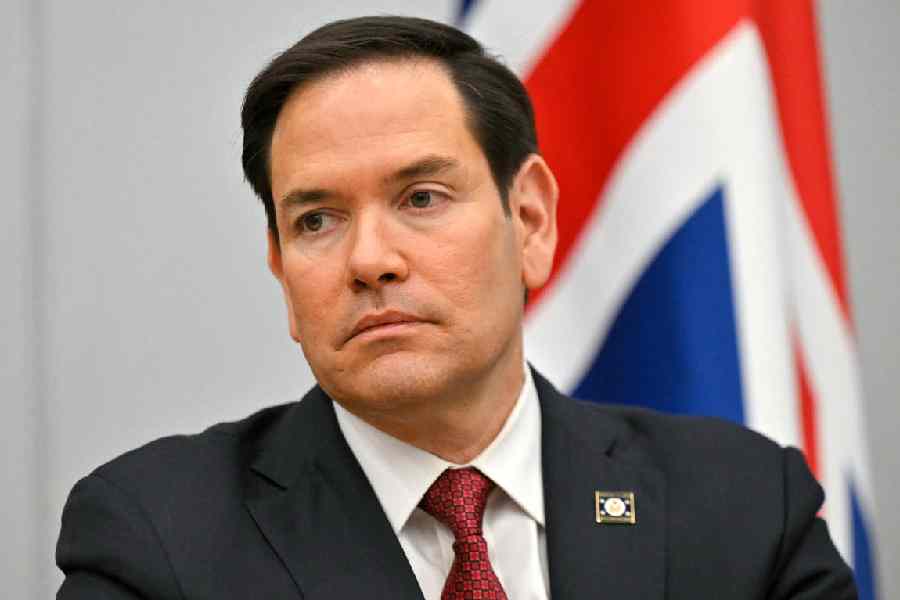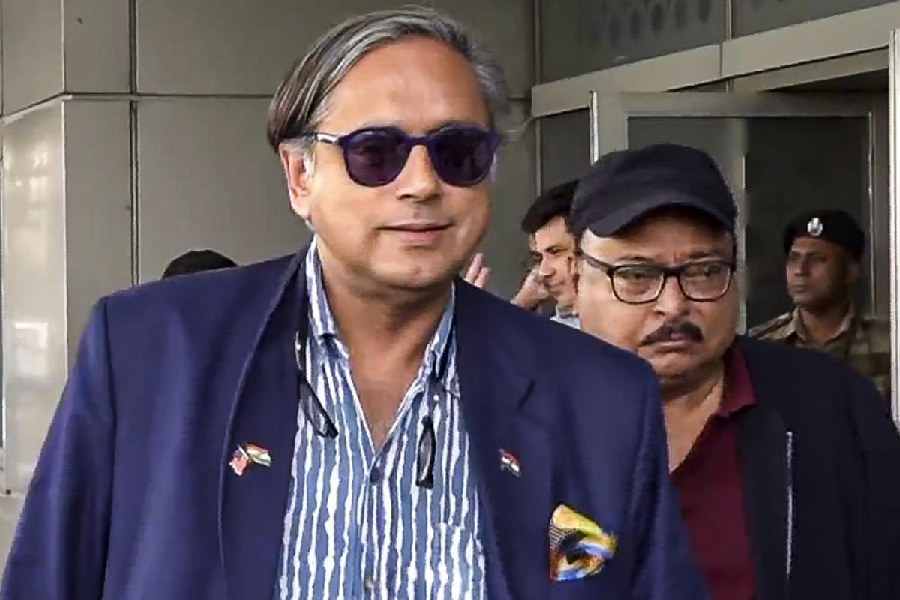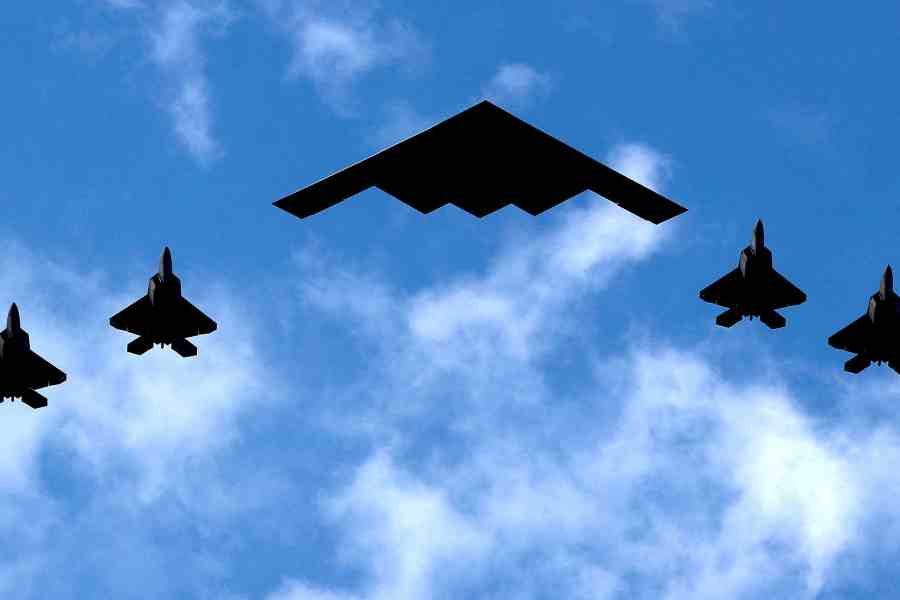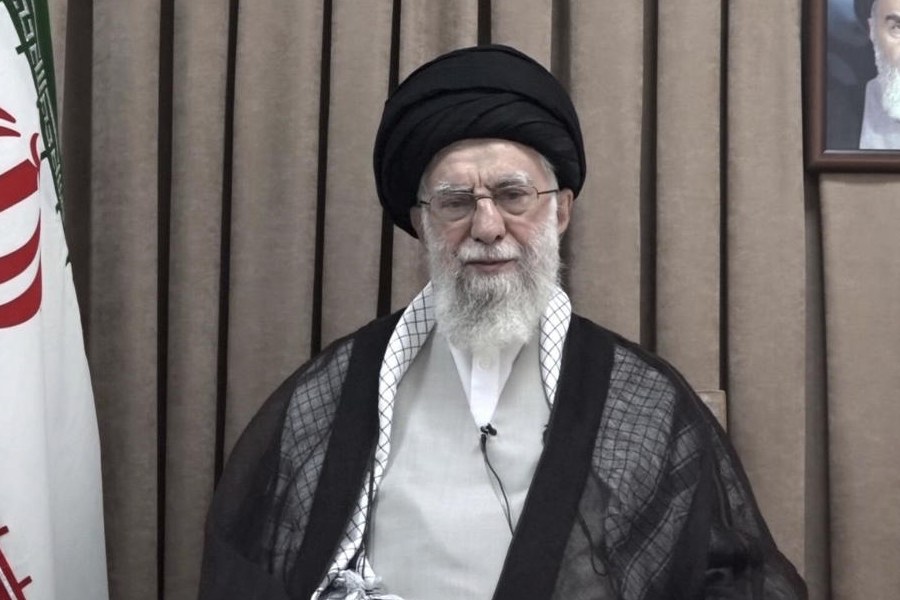 |
| President George W. Bush at the Acharya N.G. Ranga Agricultural University in Hyderabad on Friday. (AFP) |
New Delhi, March 3: A consortium of US, Russia, France and the UK will ensure uninterrupted supply of nuclear fuel to India and the Americans will support the creation of a “strategic reserve” of nuclear fuel for the lifetime of Indian civilian nuclear reactors.
These are two of the conditions India has negotiated with the US as a part of its separation plan for civilian and military nuclear facilities.
Clearly, having experienced nuclear fuel supply disruptions at Tarapur, Indian negotiators did not want the spectre to haunt them again.
The emerging details of the negotiations show India insisted on not one or two but half-a-dozen assurances. Each has been built into the separation plan to ensure permanent international safeguards are co-terminus with permanent fuel supply commitments.
A declaratory assurance has been provided in the separation plan on “uninterrupted and continuous” supply of nuclear fuel for Indian civilian reactors under safeguards. This assurance is to be incorporated in a bilateral agreement to be signed between India and the US on civilian nuclear co-operation under Article 123 of the US Atomic Energy Act.
This would achieve two things ? the assurance would become a part of US law; and it would not be dependent on the vagaries of the US administration of the day.
In addition, the assurance on continuous supply would be incorporated in a trilateral agreement between India, the US and the International Atomic Energy Agency (IAEA). Although the IAEA is not a fuel supplier, this agreement will help give international sanctity to the assurance.
However, even this was not sufficient to push the deal through. It was then decided to propose a consortium of friendly countries ? the US, France, Russia and the UK ? which would commit itself, through an agreement, to ensuring continuous supply of nuclear fuel to India. A likely provision of the agreement will be that if there is disruption in fuel supply by one of them, others will step in.
India also expressed a desire to build lifetime reserves of fuel for its civilian nuclear reactors and managed to get the following assurance in the separation plan: “The US will support the creation of such strategic reserves for the lifetime of the reactors.”
If all this fails, India would retain its “sovereign right” to take “corrective action” in the case of disruption in fuel supply.
Such assurances and counter-assurances became necessary for two reasons: India’s push for being recognised as close in status as possible to the five nuclear weapon powers; and the US desire that India ought to accept permanent or “safeguards in perpetuity” on the nuclear facilities it declared as civilian.
The IAEA has two kinds of safeguards (accounting procedures for nuclear fuel and material) and additional protocols (inspection regime) under the Nuclear Non-Proliferation Treaty (NPT). The five nuclear weapon signatories “voluntarily offer safeguards” on their nuclear facilities and the non-nuclear weapon state signatories have no choice in the matter.
As a further confidence-building measure, while the non-nuclear participants have to sign a “model” additional protocol allowing intrusive inspections by the IAEA, the nuclear “haves” negotiate an additional protocol depending on how much intrusiveness they accept.
India wants its de facto nuclear status to be as close as possible to a de jure status and to distinguish it from the non-nuclear weapon states.
However, the US demanded safeguards in “perpetuity”. This could have been a deal breaker. India had no intention of putting a facility under safeguards and then withdrawing it. So it insisted that safeguards in perpetuity must come with fuel supplies in perpetuity and agreed not to the model additional protocol meant for the non-nuclear weapon states but to one it would negotiate with the IAEA.











